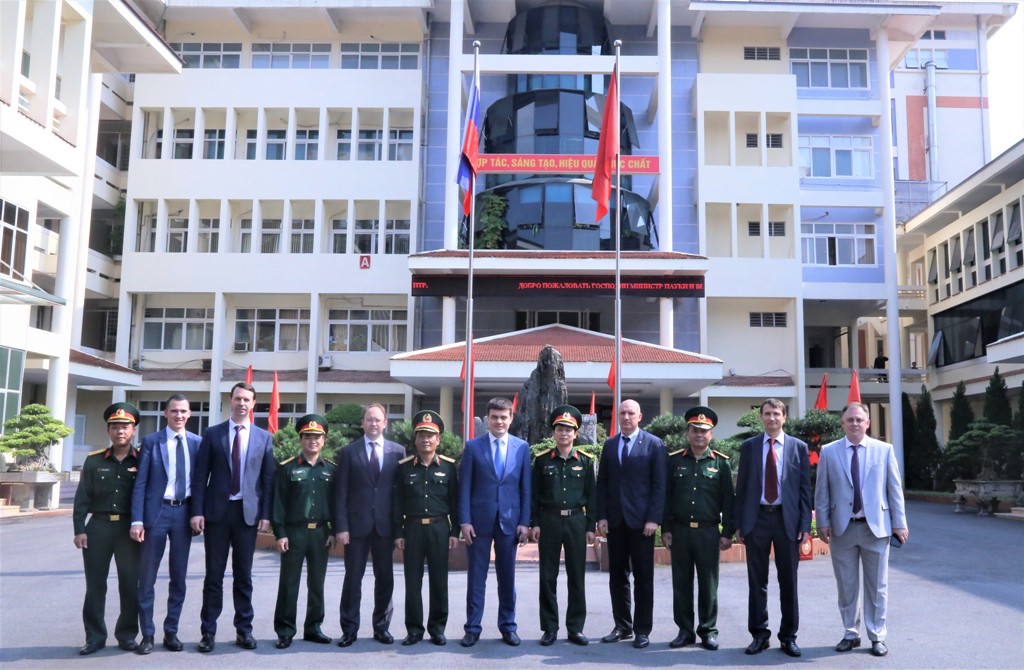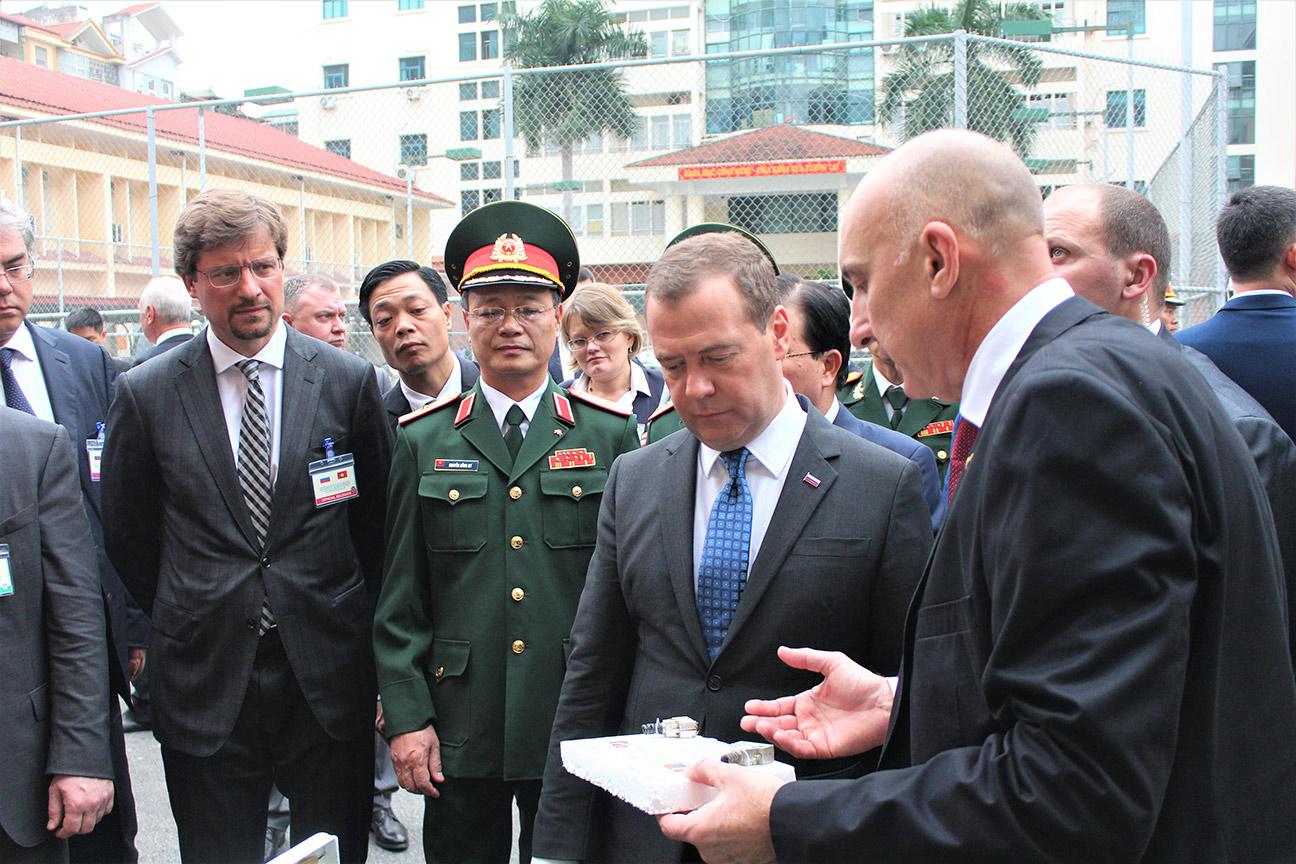Ecological monitoring stations
Climate change is currently a global challenge and has received much attention from the world scientific community. One of the causes of global warming is the greenhouse effect. Besides, multiple studies also show that vegetation plays an important role in regulating greenhouse gases (CO2, water vapor, CH₄, ...). Through the photosynthesis of plants, the terrestrial ecosystem absorbs CO2 or carbon (C) from the atmosphere, and the respiration process of plants also releases some of the previously absorbed CO2 to the atmosphere. On the other hand, the ecosystem also releases CO2 through the respiration process of soil and litterfall.

Global Carbon Cycle
As estimated by NOAA (2017), earth plants store about 560 billion tons of C (PgC), accounting for nearly 75% of the C in the atmosphere (750 PgC, figure 1). Therefore, changes in the net ecosystem exchange (NEE) of CO2 of the ecosystem leads to changes in the concentration of atmosphere CO2 - the most sensitive and influential, among the greenhouse gases (accounting for more than 50%), to the greenhouse effect that causes the climate change.
In the global C cycle, the NEE value indicates the contribution of each ecosystem in combating climate change by re-balancing the amount of CO2 generated from the burning of fossil fuels. Therefore, determining the NEE energy and exchange matter flows in ecosystems around the world is of great significance, particularly in the present time when the impacts of climate change are more obvious with more negative developments. This finding is not only the evidence to determine whether a country is entitled to or obligated to pay credits but also the important data for the United Nations to guide action policies around the world and strengthen the implementation of the Kyoto Protocol and clean development mechanisms in industrialized countries to meet the goals of the Paris Agreement on climate change.
According to IPCC reports, the rapid estimation of ecosystem carbon pools to indirectly assess the NEE for ecosystems by the biomass survey method often encounters errors in the assumption of the homogeneity of the vegetation, sampling plot selection, and representativeness of samples for each leaf, stem, root, and soil composition when analyzing C content. It is even more difficult to monitor the CO2 exchange over time (Intergovernmental Panel on Climate Change - IPCC, 2000). In addition, along with the development of science and technology, sensors have increasing high sampling frequency. The Eddy-Covariance method is evaluated by IPCC to have a clear scientific basis and high degree of reliability for calculating the NEE and energy and exchange matter flows in ecosystems for regional and regional scales.

Vietnam-Russia Tropical Center’s energy and greenhouse gas flow monitoring stations
In Vietnam, the rapid estimation of ecosystem carbon pools to indirectly assess the NEE for ecosystems has so far been mainly approached in the direction of rapid estimation of C reserves in the ecosystem by the plotting and sampling analysis method (biomass method or indirect measurement method). The limitation of this method versus the Eddy-Covariance method is that it cannot explain the kinetic exchange of exchange matter flows (CO2 and water vapor) and heat-humidity energy. It also contains potential errors in the selection of representative samples (IPCC, 2000). Approaching by the new method (Eddy-Covariance), Vietnam-Russia Tropical Center is the first to set up monitoring stations, aka Flux station, to monitor the exchange of energy and CO2 flows between the ecosystem and the atmosphere. Since 2012, based on each type of vegetation and characteristics of different ecosystems, the Center has built and implemented long-term monitoring at four location, including Cat Tien National Park; Can Gio Mangrove Forest, Kon Chu Rang Nature Reserve, and Bidoup-Nui Ba National Park (Figure 2, Table 1). The maintenance and development of Flux substation network in Vietnam will yield a valuable set of data not only for researching energy and exchange CO2 flows in Vietnam's forest ecosystems but also for the Center's ecological research.
Characteristics | Energy and greenhouse gas flow monitoring stations | |||
Cat Tien | Can Gio | Kon Chu Rang | Bidoup-Nui Ba | |
Classification | Terrestrial ecosystem and part of wetland ecosystem | Wetland ecosystem | Terrestrial ecosystem | Terrestrial ecosystem |
Altitude (meters) | 130 | 3 | 940 | 1,400 |
Ecosystem | Mixed tropical rainforest ecosystems characterized by small, medium, and large biomass, including: - Green broadleaved forest ecosystem; - Semi-deciduous green broadleaved forest ecosystem; - Wood and bamboo mixed forest ecosystem; - Pure bamboo forest ecosystem; and - Wetland ecosystem. | Mangrove forest ecosystem characterized by small biomass | Highland green forest ecosystems characterized by medium and large biomass, including: - Closed green broadleaved tropical wet forest ecosystem; and - Green broadleaved-coniferous mixed tropical forest ecosystem. | Highland green forest ecosystems characterized by medium and large biomass, including:: - Green subtropical wet subtropical mid-mountain forest ecosystem; - Subtropical coniferous low-mountain forest ecosystem; and - Broadleaved-bamboo mixed forest ecosystem. |
Ecological characteristics of the locations for Vietnam - Russia Tropical Center’s energy and greenhouse gas flow monitoring stations









